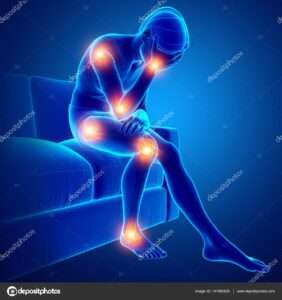Bone and Joint Disorder

Bone and joint disorders encompass a wide range of conditions affecting the skeletal system, which includes bones, joints, cartilage, ligaments, and tendons. These diseases can result from various causes, including aging, wear and tear, genetic factors, autoimmune responses, infections, and metabolic disorders.
It’s important to note that early diagnosis and appropriate management are crucial in bone and joint disorders for individuals’ quality of life. Treatment approaches may involve a combination of Ayurvedic medications, therapies, lifestyle modifications and exercises. Individualized care plans are often necessary based on the specific characteristics of each condition and the patient’s overall health.
Now we will look deep into the diseases. You will find complete ayurvedic perspective and its management of following diseases.
Osteoarthritis
Osteoporosis is a condition characterized by the weakening of bones, leading to an increased risk of fractures. It often occurs in postmenopausal women and older adults.
Rheumatoid Arthritis (Aamvata)
RA is an autoimmune disease where the body's immune system attacks the synovium (lining of the membranes that surround the joints), leading to inflammation, pain, and joint damage.
Gout
Gout is a form of arthritis caused by the accumulation of uric acid crystals in joints, leading to inflammation and intense pain.
Fracture and Dislocation
Fractures involve a break or crack in a bone and can occur due to trauma, falls, or underlying bone conditions.
Spur and Osteophytes
Lorem ipsum dolor sit amet, consectetur adipiscing elit. Ut elit tellus, luctus nec ullamcorper mattis, pulvinar dapibus leo.
Frozen Shoulder & Locked Knee
Lorem ipsum dolor sit amet, consectetur adipiscing elit. Ut elit tellus, luctus nec ullamcorper mattis, pulvinar dapibus leo.
Avascular Necrosis
Commonly happens in Hip joint. Spreading faster after COVID-19. Ayurveda has complete solution for it
Osteoporosis & Osteopenia
Osteoporosis is a condition characterized by the weakening of bones, leading to an increased risk of fractures. It often occurs in postmenopausal women and older adults.
